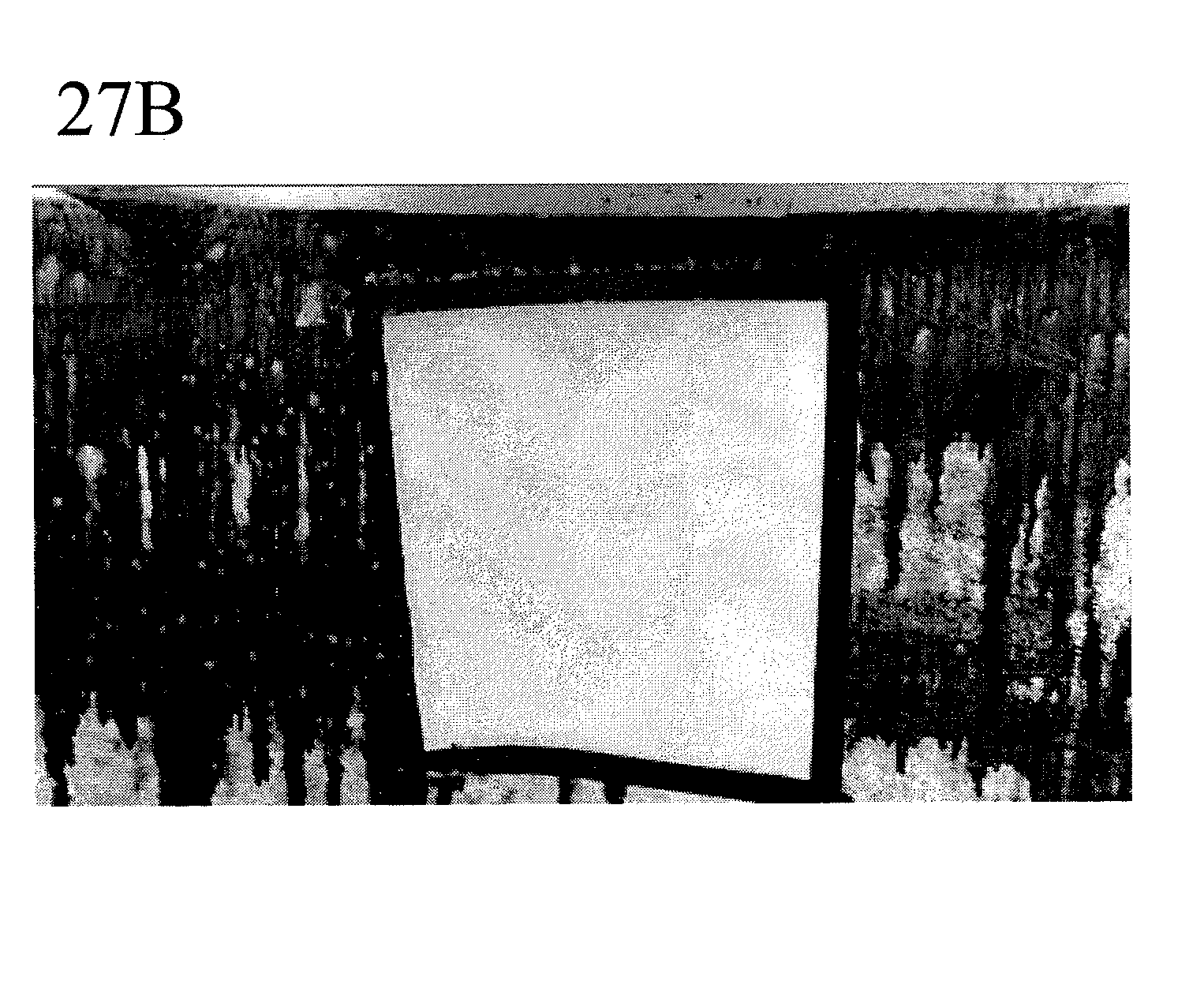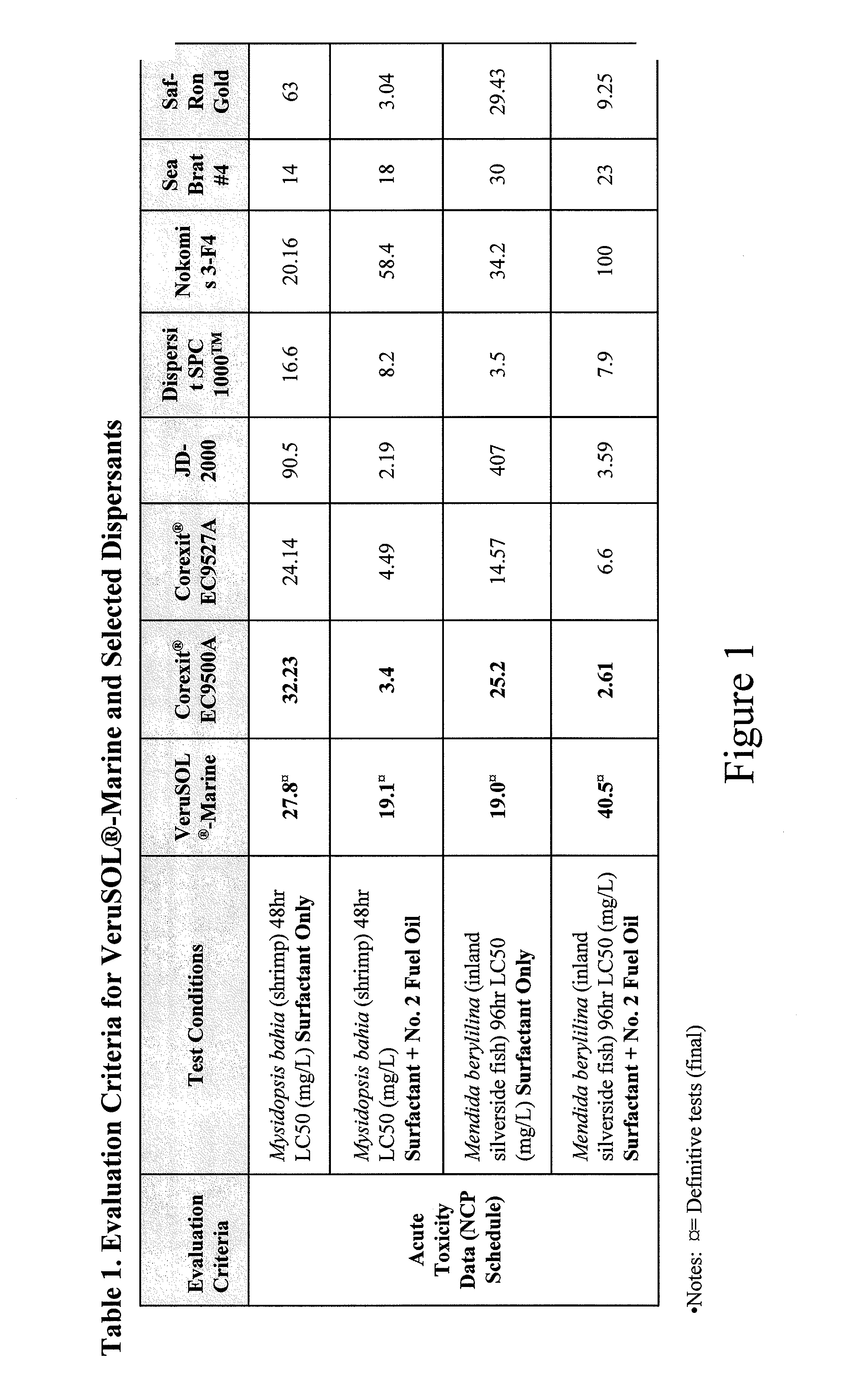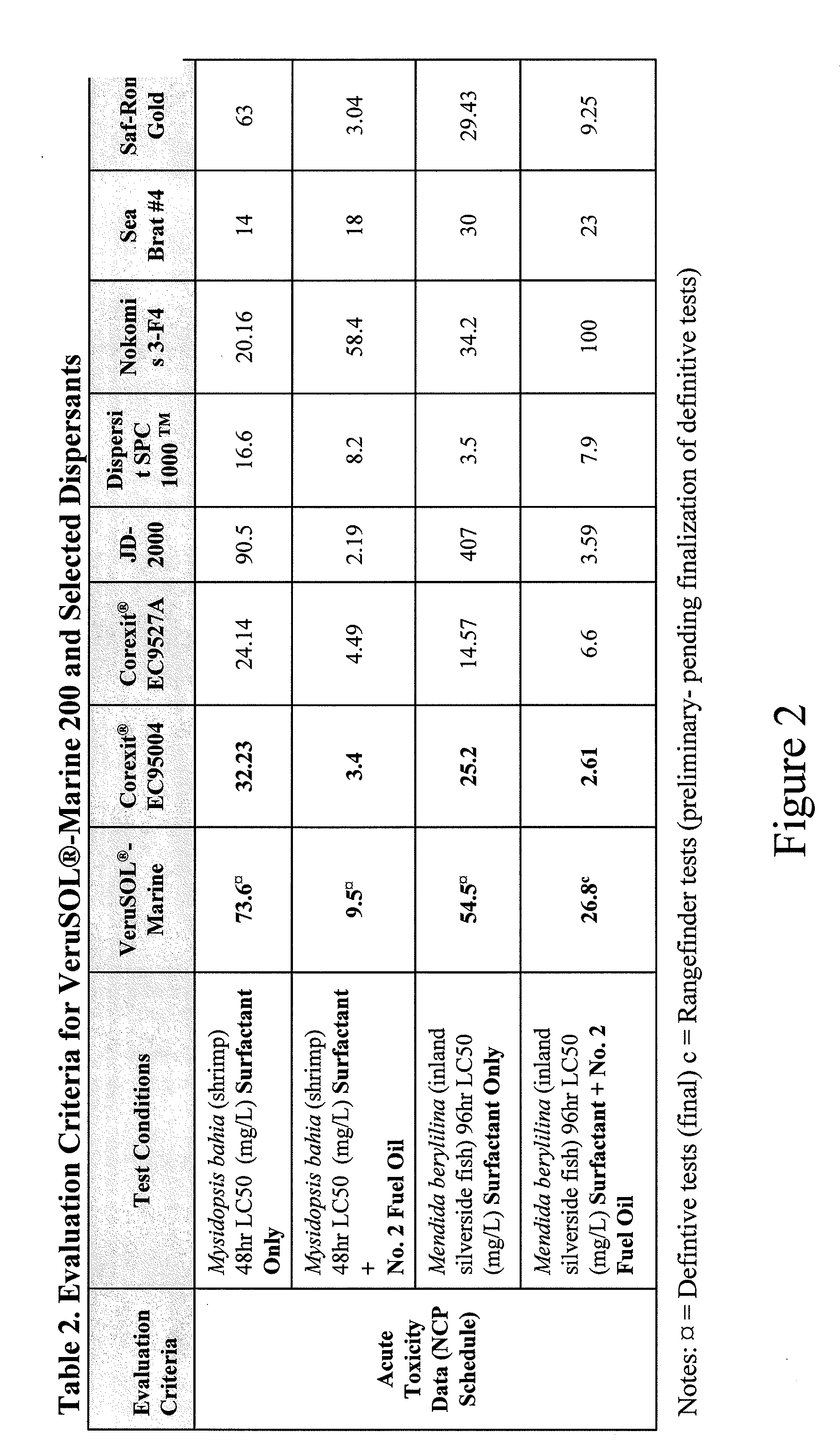Compositions and methods for oil spill remediation
a technology of oil spill remediation and composition, applied in the direction of water treatment compounds, detergent compounding agents, water/sewage treatment by oxidation, etc., can solve the problems of oil moving for miles, oil can migrate for miles, oil can be easily contaminated, etc., to accelerate the degradation process of oil released to the environment, accelerate the rate and the extent of oil degradation process, and accelerate the reaction rate
- Summary
- Abstract
- Description
- Claims
- Application Information
AI Technical Summary
Benefits of technology
Problems solved by technology
Method used
Image
Examples
example 1
Formulation-Type 1—VeruSOL®-Marine
[0187]VeruSOL®-Marine is manufactured by VeruTEK® Technologies, Inc., 65 West Dudley Town Road, Bloomfield, Conn., USA (860) 242-9800. VeruSOL®-Marine contains no chlorinated or non-chlorinated solvents and contains no alcohols. The maximum and minimum storage temperatures are 43° C. and 5° C. The optimum temperature range of this product is 10° C. to 40° C. There is no known temperature within the maximum and minimum storage temperature that would cause phase separation, chemical changes or other known alternations to the effectiveness of the product. This product has no known limitations to shelf life and will not degrade over time. The composition of VeruSOL®-Marine is three nonionic ethoxylated surfactants: Ethoxylated Castor Oil, CAS No. 61791-12-6; Ethoxylated Coconut Fatty Acid, CAS No. 61791-29-5; and Ethoxylated Coconut Amide CAS No. 61791-08 with each component in the 5%-40% concentration range in a concentrate.
Physiochemical Performance R...
example 2
Formulation-Type 2, VeruSOL®-Marine 200
[0200]VeruSOL®-Marine 200 is manufactured by VeruTEK® Technologies, Inc., 65 West Dudley Town Road, Bloomfield, Conn., USA (860) 242-9800. VeruSOL®-Marine 200 contains no chlorinated or non-chlorinated solvents (other than water) and contains no alcohols. The maximum and minimum storage temperatures are 43° C. and 5° C. The optimum temperature range of this product is 10° C. to 40° C. There is no known temperature within the maximum and minimum storage temperature that would cause phase separation, chemical changes or other known alternations to the effectiveness of the product. This product has no known limitations to shelf life and will not degrade over time. The composition of VeruSOL®-Marine is mixture of a single nonionic ethoxylated surfactant, Ethoxylated Coconut Fatty Acid, CAS No. 61791-29-5; and a decylglucoside surfactant (Poly Suga Mulse D3), recently developed (CAS Registry and TSCA Chemical Substances Inventory pending) with each ...
example 3
Formulation-Type 3—VeruSOL®-Marine 300
[0214]VeruSOL®-Marine 300 is manufactured by VeruTEK® Technologies, Inc., 65 West Dudley Town Road, Bloomfield, Conn., USA (860) 242-9800. VeruSOL®-Marine 300 contains no chlorinated or non-chlorinated solvents (other than water) and contains no alcohols. The maximum and minimum storage temperatures are 43° C. and 5° C. The optimum temperature range of this product is 10° C. to 40° C. There is no known temperature within the maximum and minimum storage temperature that would cause phase separation, chemical changes or other known alterations to the effectiveness of the product. This product has no known limitations to shelf life and will not degrade over time. The composition of VeruSOL®-Marine 300 is mixture of two nonionic decylglucoside crosspolymer surfactants (Poly Suga Mulse D3 and Poly Suga Mulse D7), recently developed (CAS Registry and TSCA Chemical Substances Inventory pending) with each component in the 25%-65% concentration range in ...
PUM
| Property | Measurement | Unit |
|---|---|---|
| wavelengths | aaaaa | aaaaa |
| wavelengths | aaaaa | aaaaa |
| wavelengths | aaaaa | aaaaa |
Abstract
Description
Claims
Application Information
 Login to View More
Login to View More - R&D
- Intellectual Property
- Life Sciences
- Materials
- Tech Scout
- Unparalleled Data Quality
- Higher Quality Content
- 60% Fewer Hallucinations
Browse by: Latest US Patents, China's latest patents, Technical Efficacy Thesaurus, Application Domain, Technology Topic, Popular Technical Reports.
© 2025 PatSnap. All rights reserved.Legal|Privacy policy|Modern Slavery Act Transparency Statement|Sitemap|About US| Contact US: help@patsnap.com



